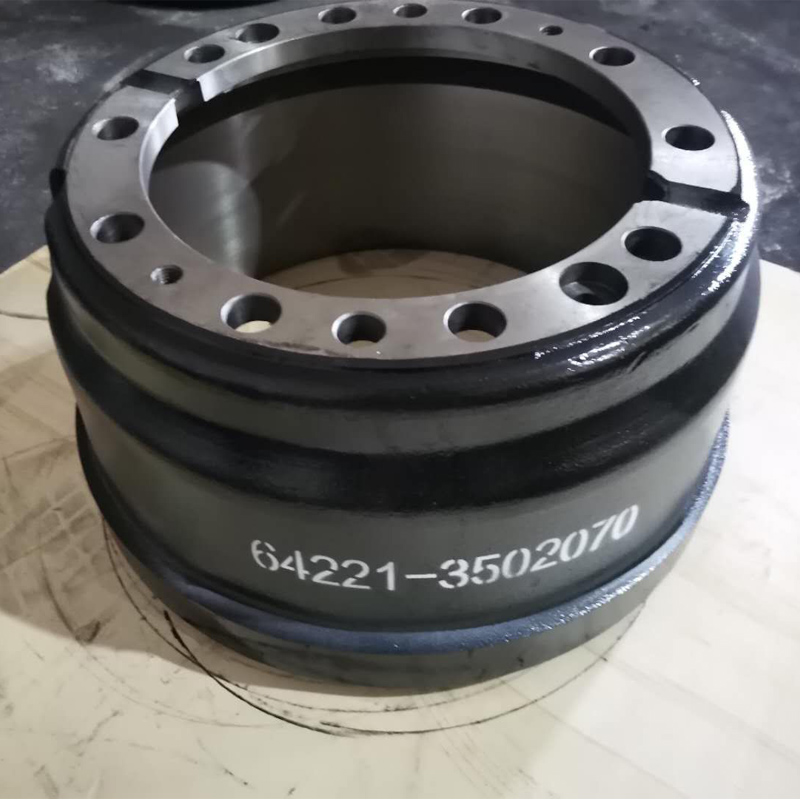Nov . 07, 2024 05:42 Back to list
Exploring the Functionality and Advantages of Industrial Drum Brake Systems in Modern Applications
Understanding Industrial Drum Brakes Features, Applications, and Advantages
Industrial drum brakes are essential components widely used in various machinery and equipment across many industries. From heavy-duty vehicles to manufacturing equipment, drum brakes are integral to ensuring safety and efficiency in operations. This article delves into the features, applications, and advantages of industrial drum brakes, providing a comprehensive overview of their significance in the industrial sector.
Features of Industrial Drum Brakes
The primary feature of industrial drum brakes is their construction. Unlike disc brakes that use a rotor, drum brakes consist of a cylindrical drum that rotates along with the wheel. Inside the drum, brake shoes are pressed against the drum's inner surface to create friction, which slows down or stops the vehicle or machinery.
Key components of industrial drum brakes include 1. Brake Drum Typically made of cast iron or steel, it is designed to withstand high temperatures and wear. The drum's interior is smooth to facilitate effective contact with the brake shoes. 2. Brake Shoes These are curved components lined with friction material. When activated, they expand and press against the drum, providing the necessary stopping power. 3. Wheel Cylinder This hydraulic component is responsible for pushing the brake shoes outward when brake fluid is applied, ensuring that the brakes engage effectively. 4. Return Springs These springs retract the brake shoes when the brake is released, allowing the drum to spin freely.
One notable differentiation of industrial drum brakes is their ability to operate efficiently under high load conditions, which is particularly important in heavy-duty applications
.Applications of Industrial Drum Brakes
industrial drum brakes

Industrial drum brakes are utilized in various applications across multiple sectors
1. Heavy Machinery They are commonly found in construction equipment, such as excavators, bulldozers, and cranes, where reliable braking is crucial for safety during operation. 2. Mining Operations Draglines and haul trucks equipped with drum brakes can handle the extreme conditions of mining sites, ensuring that equipment can stop safely while carrying heavy loads. 3. Transportation Vehicles Many industrial vehicles, including forklifts and delivery trucks, make use of drum brakes for their durability and cost-effectiveness. 4. Manufacturing Equipment Conveyor systems and assembly line machinery often employ drum brakes to regulate speed and ensure safety during operation.
Advantages of Industrial Drum Brakes
The utilization of drum brakes in industrial applications offers several advantages
- Cost-Effectiveness Drum brakes are generally less expensive to manufacture and replace than disc brakes, making them a practical choice for budget-conscious businesses. - High Friction Surface The design of drum brakes allows for a larger surface area for friction material, providing superior stopping power and heat dissipation compared to some disc brakes. - Robustness They are less susceptible to contamination from dirt and debris, which can impede the performance of other brake types. This robustness is vital in harsh industrial environments. - Self-Adjusting Features Many modern drum brake systems come equipped with self-adjusting mechanisms, which help maintain consistent performance over time without frequent manual adjustments.
Conclusion
In summary, industrial drum brakes are a critical component in a multitude of applications within numerous industries. Their design, featuring robust construction and effective braking performance, ensures they can handle heavy loads and challenging conditions. With advantages such as cost-effectiveness, high friction surface area, and increased durability, drum brakes remain a reliable choice for industries that prioritize safety and efficiency. As industries continue to evolve, the development of advanced drum brake technologies promises to enhance performance and reliability even further, solidifying their place in the future of industrial machinery.
-
Scania Brake Drums: OEM Quality for Optimal Safety & Durability
NewsAug.16,2025
-
R.V.I: Advanced Remote Visual Inspection for Precision
NewsAug.15,2025
-
Discover HYUNDA: Innovative Vehicles, Equipment & Solutions
NewsAug.14,2025
-
R.V.I: Unlock Advanced Insights & Real-time Performance
NewsAug.13,2025
-
Kamaz Brake Drum: Durable & Reliable for Heavy Duty Trucks
NewsAug.12,2025
-
Heavy Duty Iveco Brake Drum - Premium Quality & Safety
NewsAug.11,2025
